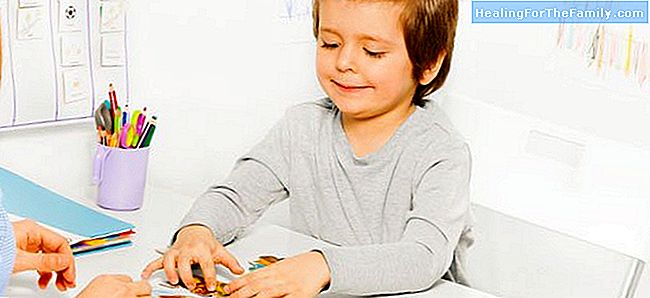Language in children with autism
Autism is a pervasive developmental disorder that can cause significant social, communication and behavioral problems. These aspects can be presented in different ways in each person. Therefore, rather than talking about autism as an entity, we must contemplate autism spectrum disorders. One of the
Autism is a pervasive developmental disorder that can cause significant social, communication and behavioral problems. These aspects can be presented in different ways in each person. Therefore, rather than talking about autism as an entity, we must contemplate autism spectrum disorders.
One of the great problems of children with autism is the language and verbal communication, which is very close to the behavior alterations.
What is the language like in children with autism?

Each child is a world, and its development is determined by different factors. According to different authors, children with autism can develop language in the following ways:
- Autistic children who do not develop any type of oral language.
- Children who acquire language with delay, both in comprehension and expression.
- Children whose language shows anomalies such as echolalia, pragmatic disorders, alterations of prosody or the use of certain words.
How can the speech therapist help children with autism?
It is very important to encourage communication with these children. However, the speech therapy intervention in these cases is much broader, and would cover different aspects:
1- Acquisition of the basic requirements for language development:
Work on aspects such as:
- Attention.
- Basic communication skills.
- Tracking of orders and imitation.
- Symbolic game.
2- Eliminate inappropriate behaviors:
What is intended is to reduce the frequency of inappropriate behaviors and increase the frequency of appropriate behaviors.
3- Alternative or augmentative communication system:
Depending on the language level of the child, we can evaluate the introduction of an alternative or augmentative communication system. Also, it is important to reinforce all the levels of the language: phonetics-phonology, syntax, semantics, pragmatics, all according to the abilities of each child.
We must adapt the intervention to each of the children at all times. Therefore, a thorough evaluation and constant adaptation of the intervention program will be necessary based on the child's progress.
Likewise, it will be important to inform parents of the diagnosis of their child and its implications, the objectives of the treatment and the course of the same. In addition, the speech therapist should be in direct contact with the professionals of the school, to carry out a joint intervention and optimize the results.












